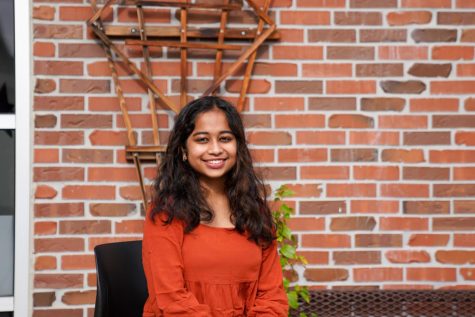Safety in the workplace
Examining the experiences of MVHS students working in public spaces
February 4, 2022

With the consistent fluctuation of COVID-19 cases in the U.S., the California Department of Public Health updated workplace rules which went into effect on Jan. 14, 2022 and included measures such as providing free testing kits to workers who were exposed and updating masking protocols.
Senior Ronit Avalani, who worked at Starbucks from June to mid-September, explains that “a lot of restrictions were being pulled off and [regulations] were loosening up [because the situation] was going towards [a] sense of normalcy [and] working there was nice and relaxed.”
Junior Julianna Kimm, who started working at Baskin Robbins at the end of July, similarly believes her experience working during the pandemic hasn’t been “that bad,” despite difficulty enforcing the mask mandate for a few customers.
“Sometimes I’m like, ‘Oh, do I tell them to or not?’” Kimm said. “Because I don’t want to aggravate the customers. But recently, I’ve been a little bit more strict about them wearing their masks. We have extra masks in the back, [so] if they don’t come in with a mask, I’ll just give it to them and [tell them], ‘I think you forgot your mask.’”
While Starbucks initially relaxed its mask policies on May 17 after the C.D.C. changed its guidelines, as Delta surged, customers and employees were required to wear masks again.
“That little middle area between the mask and no mask area, we dealt with a lot of issues with people not wanting to put up their mask or not having a mask when they walk into the store,” Avalani said. “[Those interactions often] led us to a couple of uncomfortable conversations [with the customers].”
Chelsea Eldridge, Store Manager at Starbucks, expresses how the Omicron variant brought a lot of challenges and made it “a really hard time” for both herself and her colleagues.
“I think it’s [been] challenging for us to staff,” Eldridge said. “It’s challenging for us to keep people safe on our end. It’s challenging for us to try to interact with people normally when we have barriers in the way. And I think it’s challenging when customers are upset for us to navigate that because it’s not our fault.”
Avalani’s safety concerns arose when customers would drink their coffee close to him. However, Avalani believes Starbucks management took several precautionary measures in order to ensure the safety of the baristas and customers.
“Before [vaccines] came out, [the store would] make us take a COVID-19 survey [asking questions about COVID exposure and any symptoms],” Avani said. “We would have to fill out a questionnaire to make sure we were [in good condition to work there]. Then they would check our temperature before we start our shift. Once we got [vaccinated] we submitted our vaccination status to our manager.”
In January of 2022, a Supreme Court ruling shut down the Biden administration’s effort to enlist large employers, including Starbucks, to require employees be vaccinated. On Tuesday, Jan. 9, Starbucks announced they would no longer require vaccination status or frequent testing.
Despite this, Eldridge shared how they have started implementing a 30-minute hand washing routine where employees wash their hands and wipe down high touch surfaces in the lobby and behind the counter as an additional safety measure. Avalani also believes that double masking with a surgical and cloth mask should be implemented as an extra precaution.
With all the safeguards in public workplaces, Kimm believes that these measures will continue to be taken even after the pandemic.
“I definitely think that because of COVID, a lot of the [rules we follow in public workplaces] will happen normally,” Kimm said. “It’s just safer in general.”

















